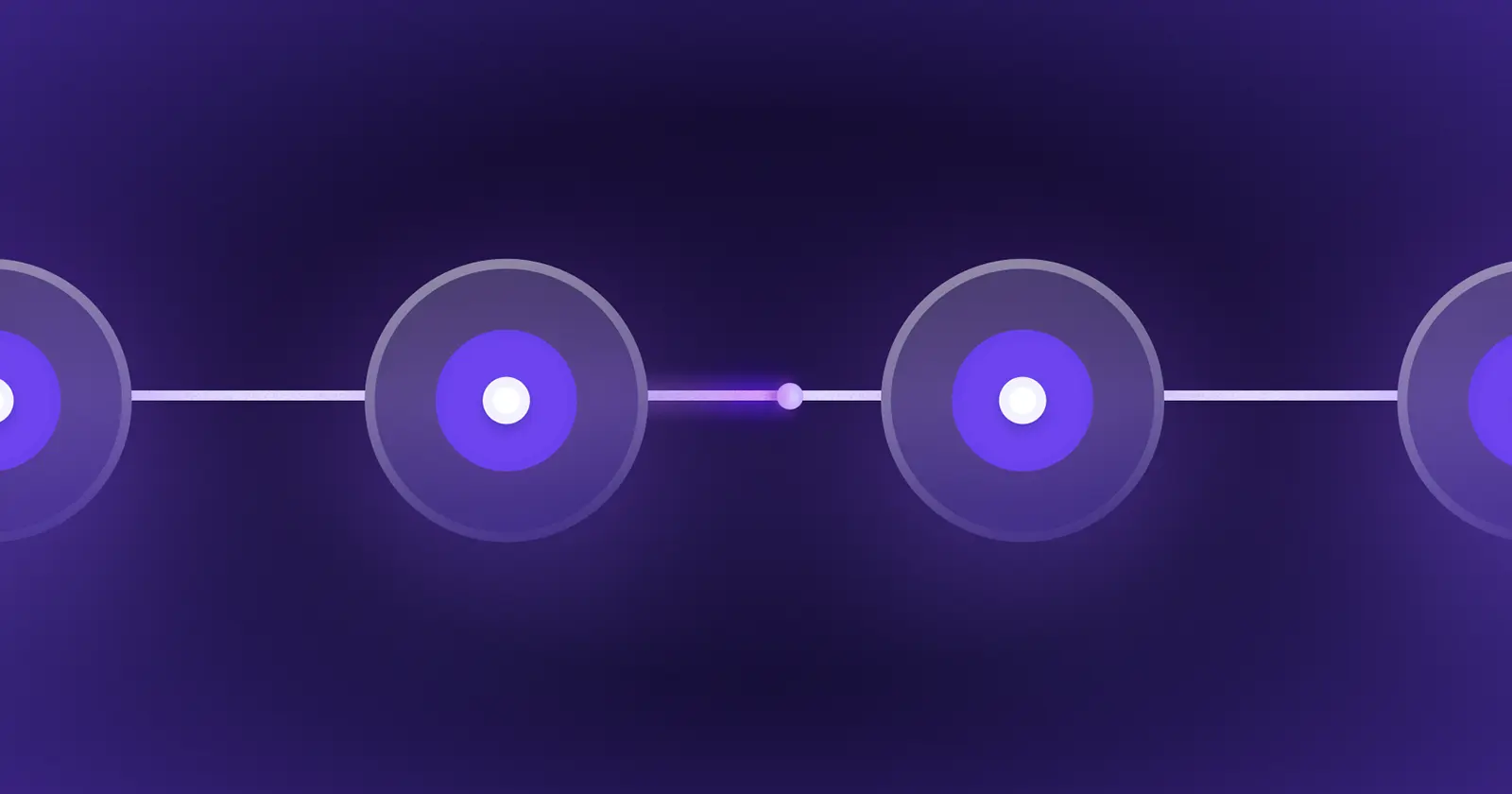HR teams oversee onboarding, offboarding, and every other point along the employee journey. And with so much on their plates, it makes sense that they are increasingly hunting for artificial intelligence tools designed to lessen that load. In fact, among the 1,052 HR leaders who participated in our 2024 State of People Strategy Report, 76% said they were looking into AI solutions.
But as HR leaders consider what AI tools to deploy and how to harness their benefits, careful planning is advised. Understanding AI’s capabilities — and limits — is critical. This article explores how HR teams are putting AI solutions to work, why they’re worth embracing, and how to steer clear of their downsides.
{{rich-takeaway}}
How HR Teams Are Using AI
Like in every other industry, AI-powered HR tools are poised to revolutionize how human resources teams work, uncovering better ways to bolster retention, foster employee engagement, and coordinate talent management. Most HR teams across the globe are eager to explore how AI technology can simplify both time-consuming tasks and more strategic HR processes, according to our 2024 State of People Strategy Report.

Two-thirds (66%) of respondents said they have already started discussing and looking for ways to use artificial intelligence. And 15% of all respondents are even further ahead, having already implemented AI solutions. Here are four ways HR teams are using AI.
AI Tools Defined
AI-powered tools and processes are made possible by computer systems that use complex algorithms and are capable of learning, problem-solving, and decision-making. Here are some common AI terms and tools.
- Generative AI: GenAI tools can create new content, including text, images, software code, and audio. They include tools such as the popular ChatGPT, Grammarly, and MidJourney.
- Machine Learning: Through machine learning, computers are designed to learn how to conduct certain tasks without being programmed to do them. Predictive analytics is a form of machine learning, allowing computers to make predictions based on historical data.
- Natural language processing: Often called NLP, natural language processing relies on computer systems that make it possible for computers to understand and analyze human language and respond. AI-powered chatbots use NLP.
1. Recruiting and Hiring
According to our State of People Strategy survey, 16% of survey respondents saw the potential for AI-driven efficiencies during the recruitment process. Others saw it as a way of empowering talent acquisition, by assisting with screening resumes and sourcing potential candidates (7%) and writing effective job descriptions (9%).

By empowering recruitment and talent management, AI can help hiring managers find new employees faster, while also reducing the cost per hire. Chatbots can ensure that job candidates’ questions about the interviewing and hiring process are quickly answered. Predictive analytics can uncover future talent gaps.
And when appropriately deployed, AI can be useful in mitigating the bias that a human hiring team can unconsciously bring to the process, more objectively evaluating resumes without a human’s preconceived notions around race, gender, or age.
AI can take on recruiting tasks such as these:
- Scanning resumes
- Writing job descriptions
- Creating pre-interview briefings
- Determining which sourcing channels would be most effective
2. Employee Onboarding and Training
Once candidates become employees, AI can help HR teams onboard and train those new hires, better preparing them for their roles. Respondents to our State of People Strategy survey see AI’s potential in enabling learning and development (9%), answering frequently asked questions (7%), and managing compensation, payroll, and benefits (5%) — all useful during the onboarding process.
By automatically serving up business policies, benefits information, and training suggestions, AI can ensure new employees are set up to succeed in the job they’ve been hired for. It also can personalize their job training workflow by helping to identify skills gaps, customize the path to learning with unique suggestions based on current skills and goals, and provide chatbots or virtual assistants that answer ongoing questions and concerns.
AI can take on onboarding tasks such as these:
- Scheduling training sessions
- Answering FAQs from new hires
- Managing onboarding paperwork
- Creating custom onboard videos
3. Productivity and Employee Engagement
HR leaders see AI’s potential in automating many of the time-consuming and repetitive HR functions that are part of their day-to-day roles, including writing and communications (19%), putting together policies and guidelines (11%), and completing other general administrative tasks (7%).
By automating those more mundane tasks, AI can empower human resources to focus on strategic work instead. And since that’s the work that’s often more interesting and less repetitive, this can affect HR professionals’ own work experience — helping foster engagement among HR team members as well. Note that if you're attempting to sift through a mountain of employee engagement data, Lattice AI can pull up insights in real-time to drive programs that bolster productivity and retention.
What’s more, those same benefits can be enjoyed across the organization — meaning that when used properly, AI can be a way to help boost productivity and employee engagement company-wide. This, in turn, can benefit the entire employee lifecycle, boosting job satisfaction and retention.
AI can take on productivity and employee engagement tasks like these:
- Developing policies and guidelines
- Completing administrative tasks
- Uncovering employee trends
- Predicting turnover
4. Performance Management
HR teams are just beginning to envision the potential AI can offer within their performance management programs as well. In our State of People Strategy survey, 6% of respondents named performance management and employee feedback as one of the areas with the most potential for AI-powered assistance, with another 8% saying it could help them create a more data-driven HR strategy.
AI’s potential to analyze performance data quickly means it can be used to give team members suggestions and real-time feedback and empower career development by offering next-step growth goals. With the right human oversight in place, AI has the potential to create employee development plans, identify biases that could be influencing performance reviews, and empower HR decision-making by analyzing what’s impacting or detracting from employee performance so people teams can build policies accordingly.
And AI tools also can streamline the tedious part of creating performance reviews, automatically pulling in information about goal completion, peer feedback and praise, and other data points. With those automated insights in hand, managers have more time to spend drafting specific and actionable performance review comments for their direct reports.
Performance management tasks that AI can take on include:
- Analyzing performance data
- Creating employee development plans
- Helping employees craft personalized growth plans
5. Administrative Tasks
Just 7% of HR respondents said they're using AI to help with administrative tasks (like maintaining employee records, filing paperwork, or updating company policies), yet almost every professional spends precious time completing administrative tasks every day. The deployment of AI for administrative tasks doesn't have to mean replacing HR admin roles with robots — it simply means AI can be used to streamline or increase the efficiency of those tasks (and the people responsible for seeing to them), leaving HR admins with more time and bandwidth to focus on the strategic parts of their roles: analysis, quality control, compliance — all the duties that still need to be managed by actual humans.
Why HR Teams Should Embrace AI
The introduction of AI has prompted concerns that the technology could disrupt the job market, replacing humans for AI-trained robots and systems. But we found that AI’s impact on job security isn’t a concern in HR departments; HR leaders see plenty of reasons to embrace the technology.
Almost three-quarters (72%) of HR professionals don’t think AI will impact headcount in most departments, and 65% aren’t worried about their job safety either. In fact, HR headcounts and budgets look to be modestly increasing or staying flat — potentially contributing to HR’s confidence.
And while people teams aren’t traditionally the most cutting-edge when it comes to tech implementation in the office, our survey results show that’s not the case when it comes to AI. Most HR professionals believe they have a lot to gain from this increasingly popular technology and see ways to put it to work for them.
“We can either join the AI movement and learn how to leverage it as a force multiplier in our work, or become outdated and perhaps eventually replaced by AI,” said Gianna Driver, chief human resources officer at Exabeam. “Personally, I choose the former — and encourage other HR managers to take proactive steps to do the same. AI enables us to do our jobs better. So let AI do what the technology can do, and focus on being human and bringing empathy and other human-centric skills to HR.”
Across industries and corporate functions, organizations are rapidly implementing AI technologies. With generative AI, in particular, some 55% of organizations were in piloting or production mode, according to a Gartner poll. And 78% of respondents agreed that the benefits of GenAI tools outweigh the risks. The benefits of AI include better decision-making and process creation, along with time and cost savings for companies.
But there are drawbacks to AI, and harnessing AI tools does require HR leaders to be intentional about its implementation. Like any technology, AI technologies present some challenges that should prompt attention and care.
Understanding the Challenges of AI
Before HR teams start implementing AI everywhere, they must understand the obstacles and limitations that can come with it. Thankfully, the HR professionals we surveyed this year weren’t unaware of the potential downsides, including the following:
1. Teams can be too quick to adopt AI.
With generative AI solutions growing in popularity so quickly, adoption has been rapid across organizations. And half of the HR professionals we surveyed saw this as a concern, with 48% either agreeing or strongly agreeing that a lack of understanding of the technology or rapid spread of AI may lead to misuse by employees.
In fact, data leaks, human error, and “AI hallucinations” — that is, incorrect or nonsensical information misrepresented as fact — are realities many organizations have already dealt with. To avoid the pitfalls, employees need to take time to understand the limitations of AI, and companies need to consider their own boundaries and best practices on this new technology before rolling it out.
2. It can amplify the biases that already exist.
When used without guardrails, AI can deepen biases that already exist within your organization. That’s because AI learns from historical data sets, meaning that if you’ve made unconscious choices in the past — for instance, around race, gender, or age during the hiring process — it can pick up on those and apply the same search criteria to new candidates.
Take Amazon as an example. In the 2010s, the business designed an AI recruiting engine meant to vet talent for open roles — including those on its software development team and in other technical positions. The algorithm was trained on resumes submitted to Amazon over a 10-year period, but there was a problem. Since the tech roles had traditionally been dominated by men, the AI model learned to discriminate against women. After discovering the bias, Amazon edited the programs to resolve the issue but eventually dropped the project.
As Amazon experienced, AI can amplify biases that already exist, such as unconscious biases included in its code. While AI matures and knowledge around it grows, proper use of AI in recruiting and other functions requires a balance between AI tools and humans. All information generated by AI tools should be reviewed and evaluated by humans in accordance with their company’s corporate governance and ethical responsibility.
Achieving AI’s Full Potential in HR
Our survey results show that HR isn’t afraid of AI — nor are they afraid for their job security in the face of its adoption. With that in mind, it seems teams are ready to go all-in on the possibilities this evolving technology offers. But what does that look like, especially with the challenges that still exist?
Here are a few ways HR can help their teams — and organizations as a whole — get the most out of everything AI has to offer:
- Governance: To ensure AI is being used responsibly and securely, organizations need policies on how their employees should and should not use it. And for many companies, HR will play a crucial role in building those guidelines, helping to guide teams as they employ AI ethically and safely going forward.
- Hiring: Even with those policies in place, human oversight will be critical to ensure AI is being used responsibly and according to company guidelines — and that organizations are getting the most out of this new technology. That may mean hiring AI experts to support its adoption throughout your business.
- Upskilling: While most of the HR teams we surveyed don’t see AI as a job replacer, that doesn’t mean it won’t change the nature of some jobs. And as AI and employees work together, there could be re-skilling or additional training necessary to ensure businesses are getting the most out of their AI investments. HR can play a critical role in bringing in the programs that facilitate that.
With the right measures in place, HR can help bolster AI’s full potential within their team and business. And in realizing that potential, they can start to see some of the benefits AI promises — an increase in productivity, improved engagement, and a clearer line to employee growth — which all have the capability to change the workplace for the better and strengthen the future of HR itself.
Level Up Your AI Adoption With Lattice
Boosting your HR systems and processes with AI is easier than ever with Lattice AI, a purpose-built AI solution designed for HR professionals. The tool is designed to augment the work of managers by providing them with the information and insights they need to better understand employees and more effectively drive performance.
With it, teams gain AI-powered engagement insights from employee surveys. Once feedback is collected, results automatically surface a key driver analysis, comment trends, and recommended actions.
Lattice AI also comes with AI-powered performance summaries. Designed to streamline the work that goes into crafting employee performance reviews, these summaries include insights based on cross-functional feedback, goals, growth areas, and other key performance indicators from the review period.
Ready to learn more about how artificial intelligence can enhance your HR teams and augment your hiring and talent management processes? Request a demo of Lattice AI.
Key Takeaways
- According to our 2024 State of People Strategy Report, most HR leaders are eager to deploy AI systems to bolster activities across the employee lifecycle, including recruiting, hiring, onboarding, and employee engagement.
- AI use comes with downsides if HR professionals aren’t careful about its deployment. A human touch to check for biases and other pitfalls is always required.
- With best practices in place, HR teams can realize their full potential as AI tools streamline daily work and allow them to focus on more strategic HR initiatives.








